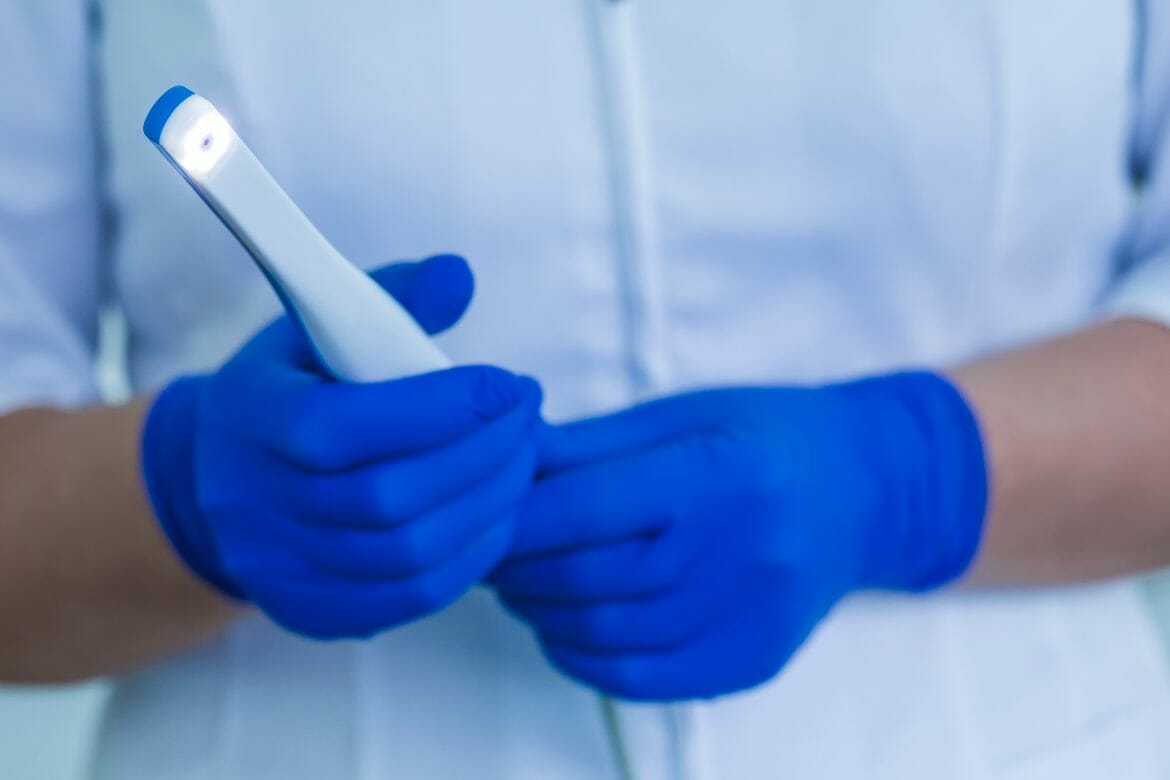Dental visits are beneficial to maintaining your oral health and ensuring your smile is the best it can be. Yet, much of what goes on when it comes to dental exams can appear to be a mystery. Thanks to new technology, however, that mystery is beginning to fade and lets you, the patient, become more involved and aware.
Such involvement and awareness can go a long way in relieving anxiety and increasing the mutually beneficial communications between you and your dental team.
One such technological advancement we use here at Bateson Dentistry is the intraoral camera. This innovative tool allows Dr. Bateson to involve you in the process of making an accurate diagnosis and finding the right personalized treatment plan for whatever your dental needs may be.
What Exactly is an Intraoral Camera?
An intraoral camera is a compact video camera the size of a large pen and contains an extremely precise, bright light built into the tip.
It is a small imaging device that can capture high-resolution images of the insides of the mouth to help determine a more accurate diagnosis and devise the next course of action to take.
Your dentist will maneuver the tiny camera around inside your mouth slowly with the goal of gaining a better understanding and view of what is going on,
As the camera screens your teeth and gums, either in one focused area or a specific tooth, it captures and magnifies those images that can help your dentist make that quicker diagnosis.
How Does an Intraoral Camera Work Exactly?
As the intraoral camera is moved around inside your mouth, it takes clear, high-resolution images of teeth and gums while simultaneously projecting those images onto a computer screen located by your chair. Your dentist may explain what you are seeing before moving on to the next section or tooth.
In contrast to how conventional x-rays work, images from the intraoral camera are instantaneous, meaning you won’t have to wait to see the results. While x-rays show the internal structures, the intraoral camera focuses on the exterior of teeth and gums in extremely high detail.
In addition, your dentist can enlarge any image to gain a closer look. With this ability, the following can quickly be diagnosed:
- discolorations,
- broken fillings,
- stress lines,
- fractures,
- tiny cracks,
- plaque build-up,
- cavities,
- failing restorations,
- lesions such as mouth sores, and
- gum inflammation (gingivitis).
Identifying any of these conditions as early as possible can prevent more serious problems from occurring later on, leading to discomfort, pain, and time-consuming appointments.
While your dentist can print these images out, the accepted practice is to keep them in your digital files and refer back to them as needed. They can also provide the images to any specialist you may need to see within the same office or as a referral by your dentist. In addition, the images may help to create custom tooth restorations, including crowns.
What are the Benefits of Intraoral Camera Images?
The use of an intraoral camera during a dental exam provides benefits to both the dentist and the patient. The benefits of the images it can provide include:
- Quicker assessment of a problem tooth by your dentist, leading to a confident diagnosis before the need to recommend a therapeutic course of action.
- Provision of valuable information to help you, the patient, make better decisions concerning your oral health. Your involvement in the planning of dental treatments is crucial to a successful outcome.
- Creation of a baseline of your overall dental health, allowing your dentist to refer back to the images as improvements are made and when newer issues arise. The images will also serve to show how much progress occurs during each step of your personalized dental treatment plan.
- Provide comfort for the patient beyond the bulkiness of traditional X-ray techniques. It also avoids irritating already sensitive teeth or tissue and doesn’t trigger the gag reflex.
- Shortens and lessens the number of necessary appointments.
- Provides valuable records to submit to dental insurance companies for clarity on recommended treatment plans or individual claims.
Is the Use of an Intraoral Camera Safe?
Intraoral cameras are safe to use as long as they are operated by a dental professional. Prior to insertion inside your mouth, the device receives a plastic sleeve or protector to protect you against any potential germs.
Your dentist will gently maneuver the wand-like device inside your mouth to avoid hard bumps or abrasions to the dental tissue. If at any time you feel discomfort, all you need to do is let the dentist know.
Schedule an Appointment with Bateson Dentistry Today
At Bateson Dentistry, we strive to offer the latest in safe technology to improve the comfort and convenience of our patients. We also keep you informed about the state of your dental health and discuss treatment options personalized for whatever your needs may be. Contact our office in Findlay, Ohio today and schedule an appointment with Dr. Bateson and her team.

